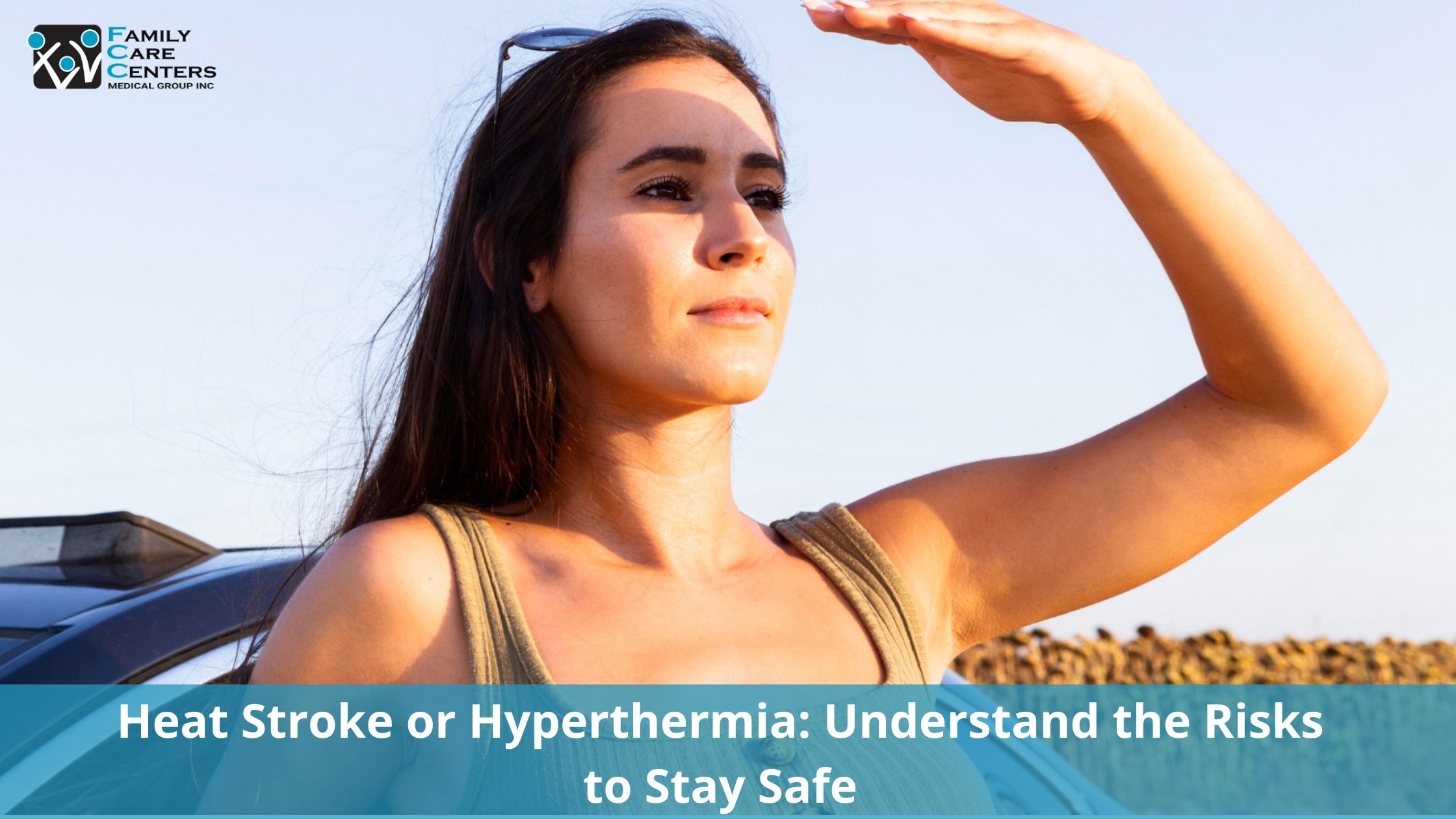

Fountain Valley Urgent Care Permanently Closed. We’re Here to Care for You at Our Other Locations.

Hyperthermia is defined as an abnormally high body temperature. This can cause 2 main medical problems: heat exhaustion and heat stroke. While heat exhaustion is typically a milder form of hyperthermia, heat stroke is a severe condition that can lead to organ failure and death, and is considered a medical emergency.
According to the CDC, heat stroke is a serious, life-threatening condition, and during 2004-2018, a total of 10,527 deaths resulted from heat-related conditions. Hence, it's important to know more about certain hyperthermic conditions to understand the difference between severe heat stroke and other heat-related illnesses.
Heat fatigue is a relatively mild condition, that leads to dehydration and reduced energy levels. Symptoms include weakness, heavy sweating, and tiredness.
Heat syncope refers to fainting or dizziness due to heat exposure. It often occurs when one is standing for long periods in a hot environment, leading to a sudden drop in blood pressure. Rest and hydration can help alleviate symptoms.
These are painful muscle contractions caused by electrolyte imbalances due to excessive sweating. Commonly affecting leg and abdominal muscles, cramps can be relieved by resting and drinking electrolyte-rich fluids.
Heat edema is caused by blood vessel dilation and increased fluid retention. It involves the swelling of extremities, such as the hands and ankles, due to prolonged heat exposure. Elevating the affected limbs and staying hydrated can help in reducing swelling.
Also known as prickly heat, occurs when sweat becomes trapped in sweat ducts, causing skin irritation (red bumps and itching). Keeping the affected area dry, wearing loose clothing, and staying in a cooler environment usually resolve the rashes.
Now, when you have read about some of the hyperthermic conditions, it's important to know the signs and symptoms related to heat stroke. If not treated in time, heat stroke can be serious and potentially fatal.
Intense abdominal pain or cramps caused by electrolyte imbalances and dehydration can be a symptom of heat stroke.
Heat stroke can lead to severe muscle cramps due to electrolyte loss and dehydration.
A throbbing headache can occur as a result of elevated body temperature caused by heat stroke.
Heat stroke can cause nausea and vomiting.
Dizziness or lightheadedness is a crucial sign of heat stroke, indicating the body's struggle to maintain proper circulation.
In heat stroke, your brain becomes affected by the elevated temperature, leading to confusion, altered mental state, or even loss of consciousness.
Weakness and fatigue are common in heat stroke due to the strain on the body's systems and the lack of electrolytes.
An absence of sweating, despite the heat, is a serious sign of heat stroke, suggesting your body's inability to regulate temperature.
Though anyone can develop heat exhaustion and heat stroke, there are certain factors that increase the risk:
Children under the age of 4 and adults 65 and older are at higher risk for heat stroke. In children and in older adults, the body's ability to regulate its temperature is reduced.
Physical activity in direct sunlight contributes to an increased risk for heat stroke by causing excessive heat generation through exertion, and overwhelming the ability to dissipate heat and regulate core body temperature.
High temperature and humidity levels elevate the risk of heat stroke as these decrease your body's ability to release heat through sweating and evaporation.
You should seek medical attention immediately if you are experiencing any of the following heat-related symptoms:
Also, call 911 if anyone in the family is having seizures due to a body temperature above 104°F.
Visit us at any of our urgent care clinics in Fountain Valley, Irvine Woodbridge, or Costa Mesa, CA, and we will evaluate you and start prompt treatment to relieve your symptoms. Remember, early intervention can save you from potentially serious complications, including organ failure and death due to heat stroke and hyperthermia. Contact us today for medical assistance and care.